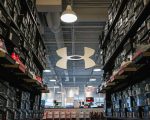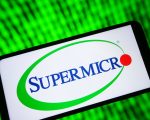
It should come as no surprise that people want to spend as much of their golden years as possible in their own homes. These days, companies are stepping up to help make that a reality. Baby boomers are either in or nearing retirement, and their impact on the economy is significant. The generation, born from 1946 to 1964, began turning 65 years old in 2011, and by 2030, they will all be older than 65, according to the U.S. Census Bureau . By 2034, older adults will outnumber children for the first time in history, the bureau said. “If you’re looking at developed markets, it’s pretty clear that we’re going to have almost like this backwards or upside down triangle of demographics as birth rates are slowing,” said Michelle Laliberte, thematic investment strategist at UBS. “People are living much longer.” Americans have a life expectancy of about 76 years, according to the Centers for Disease Control. While that has declined over the past two years due largely to the Covid-19 pandemic, the trend throughout the course of history has been upward. For instance, U.S. life expectancy in 1950 was 68, according to the CDC . “A lot of companies see this as an opportunity for investment,” said Miriam Sznycer-Taub, managing director of aging population research at Washington D.C.-based research firm, Advisory Board. An ‘underserved’ opportunity While there are some pure plays on the trend, like home health-care services companies Addus Homecare and Amedisys , technology companies are stepping up as well to support things like remote monitoring. Tech will also help seniors stay connected and support virtual doctor visits. “Most products and services targeting this group have historically just been focused on health care and leisure,” said Brian Miller, head of ETF Platform at Hartford Funds. “These areas, of course, are important, but we think there’s a broader opportunity. And, it’s kind of underserved.” His firm has an exchange-traded fund, the Hartford Longevity Economy ETF , designed to invest in the aging global population. Alphabet, Amazon and Best Buy are among the fund’s plays on the aging in place theme. The ETF had a total return of -15.74% in 2022, but is up 2.06% so far this year, according to Morningstar. For instance, Amazon has Alexa Together, a remote caregiving service that has 24/7 urgent response, fall detection response and other assistance. Alphabet has its own smart-home system, Google Nest. Apple also has ambitions to break into health , with CEO Tim Cook once saying it will be Apple’s ” greatest contribution to mankind .” The Apple Watch’s features include fall detection alerts, integrations with third-party health apps and an electrocardiogram to detect irregularities with the heart’s rhythm. Of course, senior citizens have to get comfortable with that tech. “Technology is difficult to predict the pace of change and of adoption, but I think we’re at a really interesting time right now,” said UBS’ Laliberte. “We’re starting to see greater acceptance and better technological literacy and I think that is opening up the door for a lot more innovation going forward.” Of course, as younger, tech-savvy generations age, there won’t necessarily be that barrier to entry. Best Buy breaks into the space It’s Best Buy that has really been doubling down on its efforts to break into the space. The retailer has made a number of acquisitions over the past few years, including senior remote monitoring service Critical Signal Technologies in 2019. In 2021, Best Buy bought Current Health , a tech company that helps with remote patient monitoring and telehealth. The company has also struck partnerships with health systems NYU Langone Health, Geisinger Health and Mount Sinai Health. Best Buy sees the role of technology within health care becoming much more important. “Today, consumers want to receive care in their own homes and providers are rapidly looking for ways to incorporate digital tools into the healthcare process to improve outcomes for their patients,” Best Buy Health CEO Deborah Di Sanzo said in an email to CNBC. “We have the unique ability to enable care in the home for everyone by leveraging our expertise in our omnichannel, ability to enable services, logistics, connected technology, human connection and care at home platform,” she added. That includes services like its Geek Squad, which can set up the technology in the home and train seniors and their caregivers on how to use it. Health is still a relatively small share of Best Buy’s business, but long term it can become a bigger part of the company and be a growth driver, said D.A. Davidson analyst Mike Baker. “It is a huge market opportunity,” he said. BBY 1Y mountain Best Buy has been growing its ‘aging in place’ services Baker has a buy rating and a $99 price target on the stock, which implies 21% upside from Thursday’s close. He said the stock is inexpensive and has already priced in a lot of bad news that could be ahead such as disappointing holiday sales and the likelihood of weaker economic growth this year. Demand may be down from pandemic highs, but the home will still be a hub for entertainment, Baker said. He’s more bullish than many of his peers. The average analyst rating on the stock is hold and the average price target implies 2.6% downside, according to FactSet. Medicare Advantage supports the trend It’s not just technology that will enable people to stay in their homes for longer. There is a lot that comes into play, including home personal- and health-care services and house modifications. Meals can be delivered and Ubers can be hired instead of seniors driving their own cars. Kitchen counters may need to be lowered and bathtubs can be swapped out to be more accessible. “Aging in place, that trend is really driven to drive more independence, aging in place with dignity, improved emotional wellbeing, and cost savings to the system,” said Dr. Jay Bhatt, managing director of Deloitte’s Center for Health Solutions and Health Equity Institute. “There’s more evidence showing that most older adults feel safer receiving care in their own home and report greater satisfaction with care they receive when they’re in familiar and comfortable surroundings,” he added. The desire to make it happen is clearly there. Some 88% of those between the age of 50 and 80 said it is very or somewhat important for them to live in their homes as long as possible, according to the National Poll on Health Aging from the University of Michigan’s Institute for Healthcare Policy and Innovation. Nearly 2,277 adults ages 50-80 were surveyed in January and February 2022, and the sample was then weighted to reflect the U.S. population. Not only is the growing senior population helping drive the age in place theme, so is the growth of Medicare Advantage, the Advisory Board’s Sznycer-Taub said. Medicare Advantage , sometimes called Part C, is a way to receive Medicare coverage through private health plans and essentially combines both basic coverage, or Part A, as well as Part B, outpatient services. Most also include prescription coverage. “Medicare Advantage plans are really interested in keeping beneficiaries in their home as part of their effort to lower health care costs,” she explained. Medicare Advantage’s health care at home coverage includes primary care, transitional care when someone is released from a hospital and often hospice care, she said. More than 30 million Americans are now enrolled in a Medicare Advantage plan. Addus Homecare, which has a market cap of about $1.7 billion, is one of those providers of personal care, hospice and home health services. ADUS 1Y mountain Addus Homecare’s one-year performance Raymond James has an outperform rating on the stock and a price target of $125, which implies about 17% upside from Thursday’s close. Both are in-line with the averages on FactSet. About 25% of the people Addus Homecare pays to care for the beneficiaries are their own family members, he said. “Any provider that drives down insurance company costs will be in a good spot,” said John Ransom, managing director of healthcare equity research at Raymond James. “They save the insurance companies at least 50% of what the cost would be to send the person to the nursing home.” Another home health provider is Amedisys, which has a $3 billion market cap. Ransom has a market perform rating on the stock and cut his 2023 estimate for earnings before interest, taxes, depreciation and amortization (EBITDA) estimate earlier this month to a Street low of $250 million. Among his reasons cited were higher labor inflation and higher losses from Contessa, the hospital-at-home company it acquired in 2021. However, the average analyst rating is overweight, according to FactSet. The stock has nearly 22% upside to the average analyst price target. AMED 1Y mountain Amedisys’ one-year performance CVS Health also wants to expand into home health and announced in September it will buy Signify Health , which offers patient care through virtual and in-person visits. CVS is also the parent of Aetna, which is a Medicare Advantage plan provider. The company has an average analyst rating of buy and has 30% upside to the average price target, per FactSet. One telemedicine name Wall Street is not bullish on is telehealth services platform Teladoc Health , which soared during the pandemic but lost 74% in 2022. The average analyst rating is hold, although it still has about 28% upside to the average analyst price target. Teladoc recently announced a restructuring plan to reduce operating costs and this week laid off 300 workers , or 6% of its workforce. Home modifications are key Then there are those names that play into the home’s physical structure and amenities, namely Home Depot and Lowe’s . Both names are in Miller’s Hartford Longevity Economy ETF. “Home improvement and modifications are very important,” he said. “It’s a more functional living area with increased accessibility, the idea of single floor living spaces [and] safety modifications.” It can not only be ramp decking or stair lifts, but more user-friendly appliances with big buttons and grab bars for the shower. Both home improvement retailers have been focusing on this segment of the population — Home Depot has its independent living program, while Lowe’s has its livable home services. D.A. Davidson’s Baker likes Lowe’s, although the aging in place segment is a very small part of his investment thesis. He expects Lowe’s is starting to close the performance gap on a number of measures relative to Home Depot. That should lead to higher earnings power, said Baker, who has a buy rating and $237 price target on Lowe’s stock. That implies 17% upside from Thursday’s close. One-stop shop ahead? Right now, seniors and their caregivers are piecing everything together — using technology companies to help with monitoring, for instance, and another company for home-health and personal care services and another to make modifications to the home. Often, they are trying to solve problems as they occur. The big opportunity — and the need — is for one company to pull it all together, said Joseph Coughlin, director of MIT AgeLab and author of “The Longevity Economy.” Those that do it will have a “demographic and lifestyle wind at the back,” he said. “Aging in place will ultimately become a subscription from a trusted brand that will integrate all these other services and products,” Coughlin predicted. In fact, he believes it will happen within the next five years. MIT is currently working with companies that are looking to do it. While he won’t name names, so far he thinks Best Buy has come the closest with its in-store options and expansion into health. “The greatest innovation they have in that store is Geek Squad — not only to install [tech] but to troubleshoot,” he said. What is offered may also have to shift once the baby boomers become older and sicker. “A lot of these companies who are making investments in aging in place may need to change what they’re offering, because they’re going to be dealing with a different set of people,” said Advisory Board’s Sznycer-Taub. One thing that won’t change is the desire to stay in the home as long as possible, she added.








